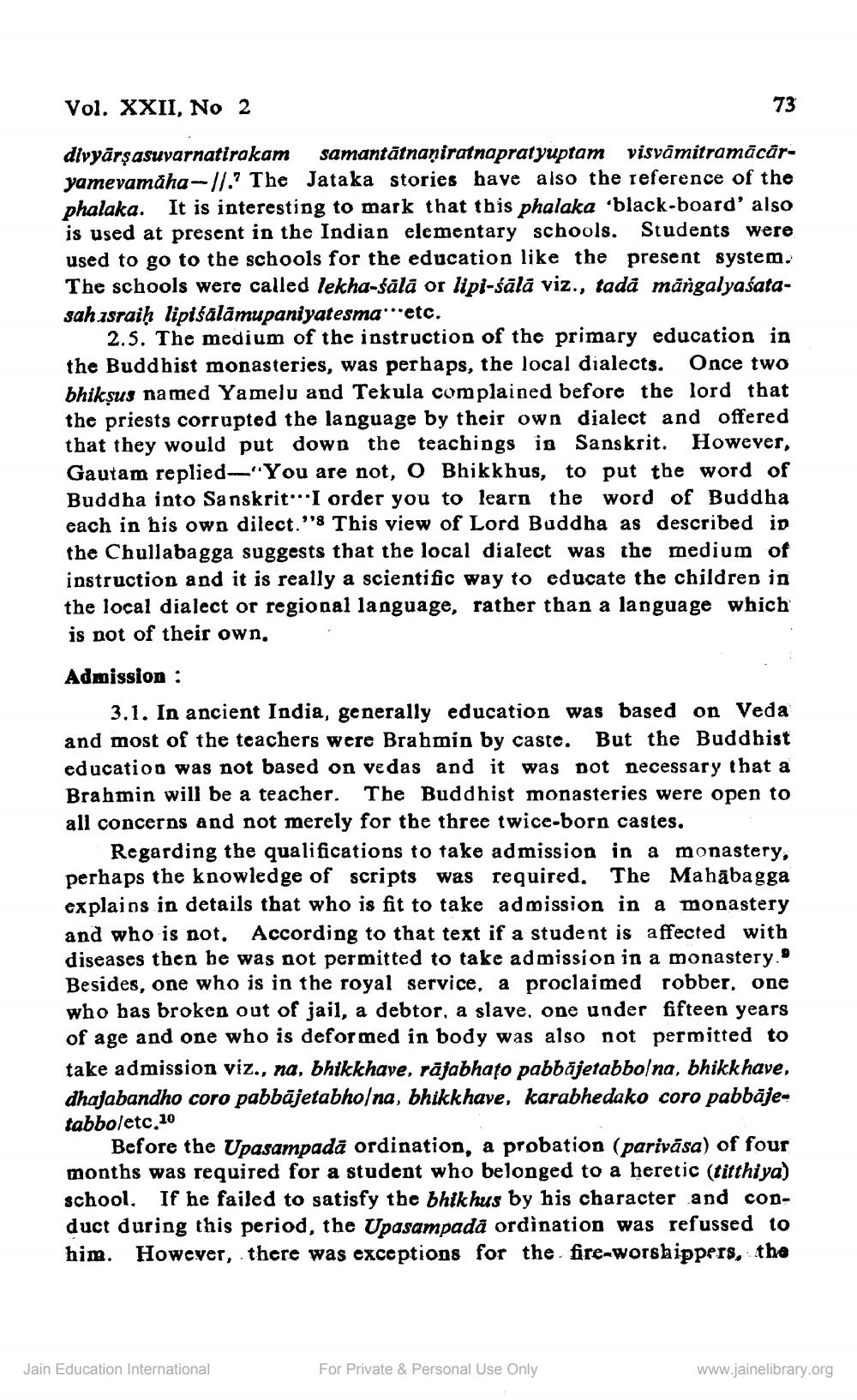________________
Vol. XXII, No 2
73
divyārşasuvarnatirakam samantātnaniratnapratyuptam visvamitramācāryamevamåha-//.The Jataka stories have also the reference of the phalaka. It is interesting to mark that this phalaka 'black-board' also is used at present in the Indian elementary schools. Students were used to go to the schools for the education like the present system. The schools were called lekha-śālā or lipi-śālā viz., tadã mangalyaśatasah israih lipiśālāmupaniyatesma' etc.
2.5. The medium of the instruction of the primary education in the Buddhist monasteries, was perhaps, the local dialects. Once two bhikṣus named Yamelu and Tekula complained before the lord that the priests corrupted the language by their own dialect and offered that they would put down the teachings in Sanskrit. However, Gautam replied-_"You are not, O Bhikkhus, to put the word of Buddha into Sanskrit. I order you to learn the word of Buddha each in his own dilect."'8 This view of Lord Buddha as described in the Chullabagga suggests that the local dialect was the medium of instruction and it is really a scientific way to educate the children in the local dialect or regional language, rather than a language which is not of their own,
Admission :
3.1. In ancient India, generally education was based on Veda and most of the teachers were Brahmin by caste. But the Buddhist education was not based on vedas and it was not necessary that a Brahmin will be a teacher. The Buddhist monasteries were open to all concerns and not merely for the three twice-born castes.
Regarding the qualifications to take admission in a monastery, perhaps the knowledge of scripts was required. The Mahabagga explains in details that who is fit to take admission in a monastery and who is not. According to that text if a student is affected with diseases then he was not permitted to take admission in a monastery." Besides, one who is in the royal service, a proclaimed robber, one who has broken out of jail, a debtor, a slave, one under fifteen years of age and one who is deformed in body was also not permitted to take admission viz., na, bhikkhave, rajabhato pabbājetabbo na, bhikkhave, dhajabandho coro pabbājetabho/na, bhikkhave, karabhedako coro pabbāje. tabbo/etc. 10
Before the Upasampadā ordination, a probation (parivāsa) of four months was required for a student who belonged to a heretic (titthiya) school. If he failed to satisfy the bhikhus by his character and conduct during this period, the Upasampada ordination was refussed to him. However, there was exceptions for the fire-worshippers, the
Jain Education International
For Private & Personal Use Only
www.jainelibrary.org




